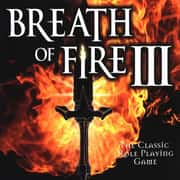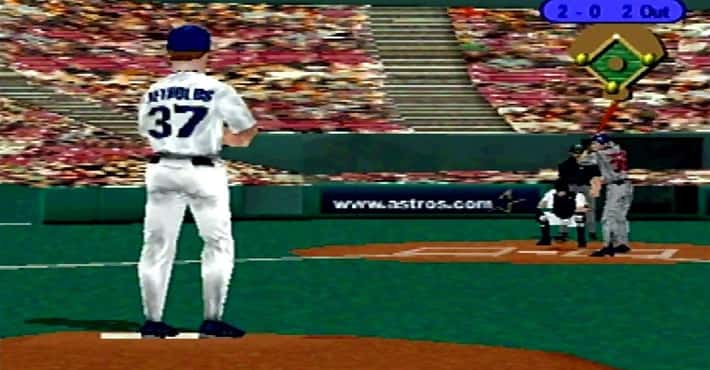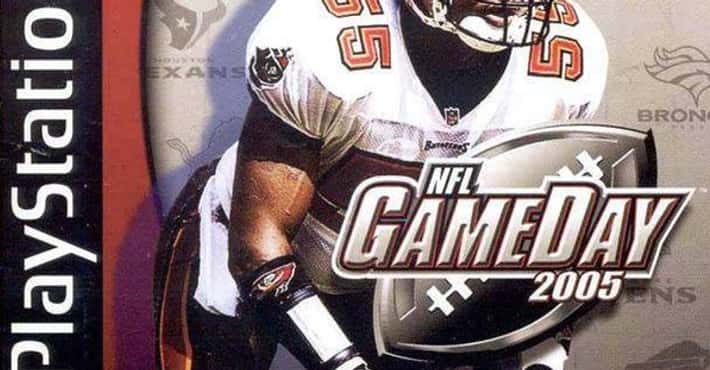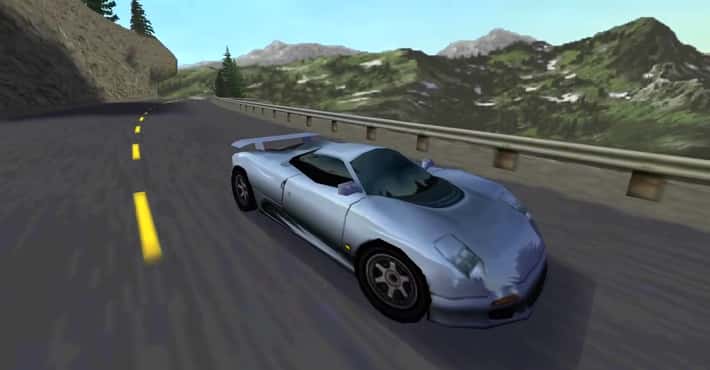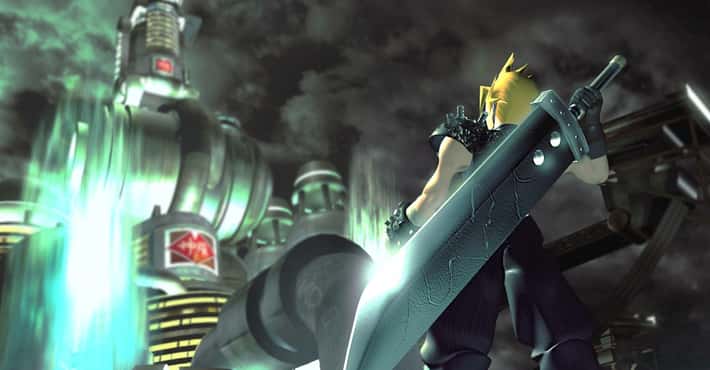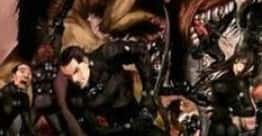Here is a detailed list of every PlayStation game ever produced for the Sony PlayStation One system. The PSOne console was one of the most popular game systems of all time. PlayStation 1 games were produced by hundreds of Sony PlayStation game developers. The PlayStation One games featured state-of-the-art graphics. The PlayStation 1 now has a cult following amongst classic game collectors, with a library of both large titles and little-known classics. Feel free to use these list items to start a list of your favorite PlayStation 1 games.
While PS1 may be a relic of gaming systems past, some of these games have lived on greater versions on newer versions of PlayStations. What are Playstation 1 games? Take a look here and see all the great PS1 games.
- Jan 01 1996Bottom of the 9th is a baseball game by Konami for the Sega Saturn, PlayStation and the Nintendo 64. It is a heavily updated version of Konami's 1989 arcade game Bottom of the Ninth. It was originally released for the Sega Saturn.
- Bottom of the 9th '99 is a baseball video game published and developed by Konami and released in 1998 for the PlayStation.
- Brain Dead 13 is an Interactive movie game produced by ReadySoft that was released for MS-DOS in 1995 and later ported to consoles in 1996. Unlike Dragon's Lair and Space Ace, which began as laserdiscs, it was released for PCs and game consoles only. On October 8, 2010, Brain Dead 13 was ported to the iPhone, iPad, and iPod Touch via the App Store, and later upgraded to Version 1.1 on December 1, which added support for iOS 3.0 and 4.2 and fixed various bugs.
- Jan 01 1998Brave Fencer Musashi is an action role-playing game developed and published by Square in 1998 for the Sony PlayStation. The game involves real-time combat in a 3D environment, and features voice overs for most dialogue. Brave Fencer Musashi was scored by Tsuyoshi Sekito, a former Konami employee. The story follows Musashi, a young swordsman who is summoned to a parallel world to defend Allucanet Kingdom from the Thirstquencher Empire. His journey is primarily focused on obtaining the Five Scrolls which are able to enhance the powers from his sword Lumina, and searches for them while interacting with people from Allucanet and a nearby village. The game was originally conceptualized in 1997. As a departure from Square's previous role-playing games, it brought the team several difficulties. Nevertheless, the game received positive critical response and got a sequel in 2005 for the PlayStation 2 under the name of Musashi: Samurai Legend.
- Jan 01 1976Breakout is an arcade game developed and published by Atari, Inc. It was conceptualized by Nolan Bushnell and Steve Bristow, influenced by the 1972 Atari arcade game Pong, and built by Steve Wozniak aided by Steve Jobs. The game was ported to multiple platforms and upgraded to video games such as Super Breakout. In addition, Breakout was the basis and inspiration for books, video games, film, and the Apple II personal computer. In the game, a layer of bricks lines the top third of the screen. A ball travels across the screen, bouncing off the top and side walls of the screen. When a brick is hit, the ball bounces away and the brick is destroyed. The player loses a turn when the ball touches the bottom of the screen. To prevent this from happening, the player has a movable paddle to bounce the ball upward, keeping it in play.
- Breath of Fire III is a role-playing video game developed and published by Capcom originally for the PlayStation console as part of the Breath of Fire series. Initially released in Japan on September 11, 1997, the game was later released in North America and Europe in 1998. It is the first game in the franchise to feature three-dimensional graphics and voice acting. The title was developed by director Makoto Ikehara and features a unique jazz-inspired soundtrack by company composers Yoshino Aoki and Akari Kaida. On August 25, 2005, the game was ported and released for the PlayStation Portable handheld system in Japan, and was also released in Europe on February 3, 2006. The story takes place in a fantasy world where humans live alongside anthropomorphic creatures, and centers the story on Ryu, the last of The Brood, as he searches the world to uncover the mystery of his people and reunite with his surrogate family. Ryu's journey takes him into adulthood where he is joined by a number of other characters who aid him in his quest. Breath of Fire III received mostly positive reviews upon release, and would go on to sell approximately 425,000 copies in Japan.
- Breath of Fire IV, released in Japan as Breath of Fire IV: Utsurowazaru Mono is a role-playing video game developed by Capcom, and is the fourth game in the Breath of Fire series. It was originally released for the Sony PlayStation home console in Japan and North America in 2000, and the PAL region in 2001. The game was later ported to Windows-based PCs in Europe and Japan in 2003. Just as in previous games of the series, Breath of Fire IV follows the adventures of a young man named Ryu, who has the power to transform into powerful dragons. The Ryu in this game must team up with several other skilled warriors to combat an awakened immortal emperor from ascending to godhood and destroying the world of man. Like Breath of Fire III, the game utilizes a mix of two and three-dimensional computer graphics and turn-based battle sequences.
- Jan 01 1994Brian Lara Cricket is the first in a series of cricket games to be endorsed by Brian Lara. There have been more games in the series, Brian Lara Cricket '96, Brian Lara Cricket '99, Brian Lara International Cricket 2005 and Brian Lara International Cricket 2007. Brian Lara Cricket was released on the PC in 1994 for DOS and Sega Mega Drive and Amiga in 1995 by Codemasters. The game was also rereleased in 1999 under the Codemaster Classics brand for Windows. It was developed by Audiogenic. The Mega Drive version spent 10 weeks at number 1 in the UK games charts during the summer of 1995. The game is a rebranded version of Graham Gooch World Class Cricket.
- Nov 05 1996Broken Sword: The Shadow of the Templars is a 1996 point-and-click adventure game developed by Revolution Software. The player assumes the role of George Stobbart, an American tourist in Paris, as he attempts to unravel a conspiracy. The game takes place in both real and fictional locations in Europe and the Middle East. In 1992, Charles Cecil began researching the Knights Templar for the game after he, Noirin Carmody and Sean Brennan conceived Broken Sword. It was built with Revolution's Virtual Theatre engine. This was also used for the company's previous two games. Cecil co-wrote and directed the game, while Eoghan Cahill and Neil Breen drew the backgrounds in pencil and digitally colored them in Photoshop. The game has a serious tone, but features humor and graphics in the style of classic animated films. Critics lauded Broken Sword 's story, puzzles, voice acting, writing, gameplay, and music. The game received numerous award nominations and wins. It achieved commercial success as well, with one million copies sold by the mid-1990s. Topping several lists, it is known as one of the greatest examples of adventure gaming.
- Jan 01 1998Brunswick Circuit Pro Bowling is a ten pin bowling game released for the PC and PlayStation in 1998 and the Nintendo 64 in 1999.
- 1996Bubsy 3D is a platform video game developed by Eidetic and published by Accolade and Telstar for the PlayStation video game console. Designed by Michael Berlyn, it was released on October 31, 1996 in North America and in August 1997 in Europe. The Bubsy series stars an eponymous protagonist. It is one of the first 3D platform games, though with limited movement. The game's complete name is a parody of Forbidden Planet, a 1956 sci-fi film. The game was critically panned and was called one of the worst games of all time by GameTrailers, IGN, and GamesRadar. Many of the major elements of the game received criticism; it has been criticized for its graphics, its controls, and the obnoxious personality of Bubsy.
- Dec 08 2000Bugs Bunny & Taz: Time Busters is the second Looney Tunes video game for the Sony PlayStation and Microsoft Windows and is an indirect sequel to Bugs Bunny: Lost in Time. It also came on a Twin Pack CD bundled with Wacky Races in 2003.

















